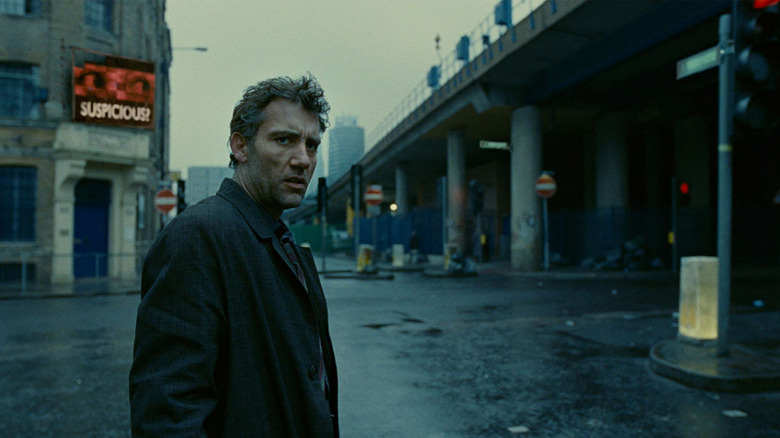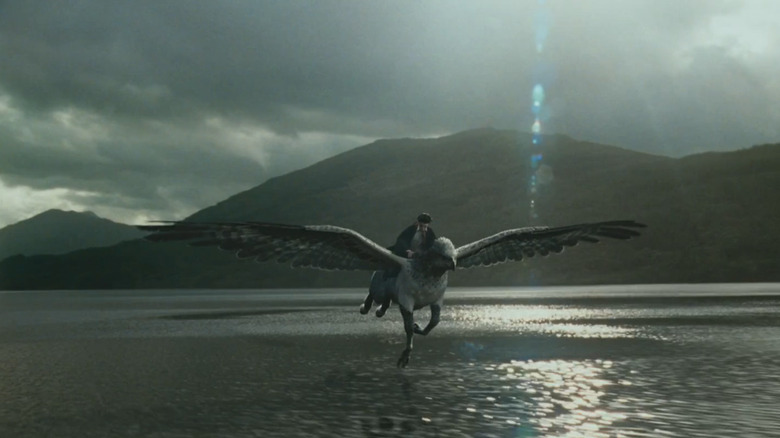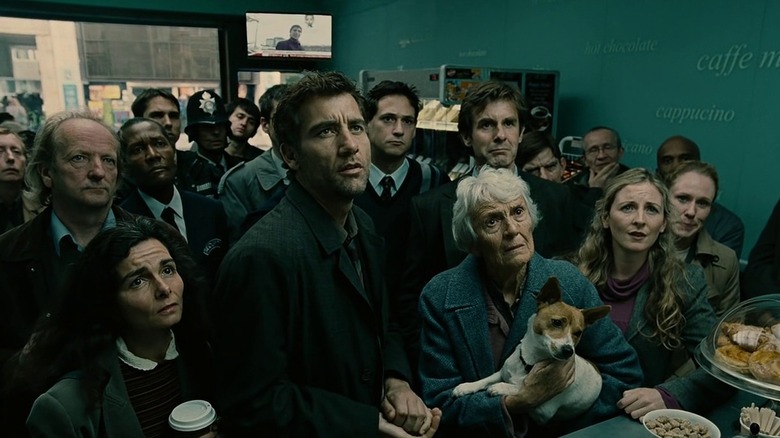How Harry Potter Helped Alfonso Cuarón Understand Children Of Men
When Alfonso Cuarón was announced as the director of "Harry Potter and the Prisoner of Azkaban" in 2002, it was a bit of a bold choice. The director of the first two films, Chris Columbus, delivered safe and dependable work. "The Sorcerer's Stone" and "Chamber of Secrets" were both perfectly competent adaptations, if not necessarily ones that blew us away with the camerawork.
Meanwhile, Alfonso Cuarón was not as interested in giving us a faithful adaptation as his predecessor. The very first scene in the movie shows Harry flippantly using magic outside of school, which any big fan of the books can tell you should've been a much bigger deal. "Prisoner of Azkaban" is also the movie that fails to give viewers the full history behind the Marauders provided in the book, a decision that would have an unfortunate snowball effect throughout the rest of the series. Whereas the first two movies were a nearly scene-by-scene adaptation of the source material, Cuarón felt comfortable making major changes if it helped the flow of the movie. Or as was the case with the opening scene, he'd change things because it looked cool.
Despite this, Cuarón still delivered what's often considered the best movie in the series. "Prisoner of Azkaban" simply looks good, in a way that none of the other films ever quite match. It's filled with inspired long takes and camera tricks that imbue a sense of energy even to scenes that are mainly exposition. Those long takes are nothing, however, compared to what he'd pull off in his next film, "Children of Men." Although the 2007 R-rated dystopian film seems completely different from the magical children's movie, Cuarón credits "Prisoner of Azkaban" with helping him pull "Children of Men" off.
Making connections and gaining experience
Cuarón helped write the screenplay for "Children of Men" right after finishing his 2001 Mexican road film "Y Tu Mamá También," but the movie never got off the ground until around 2004. "I'm thankful that it happened the way it happened," Cuarón said. "Because of the way it happened, I had the opportunity of doing 'Harry Potter' before and that gave me the opportunity of having two years of work relationships in Britain, in London." It also allowed him to meet Clive Owen, who'd end up playing the star role of Theo.
Most importantly, spending so much time in England gave Cuarón the chance to get to know the British better. The book "Children of Men" was based on was also set in England, but it was only after spending years in the country that Cuarón felt fully equipped to set a whole movie in a real, non-magical British society. "I got to experience the social dynamics of the British psyche that was so important, then I realized how flawed our approach was of British reality," he said.
The other benefit was that after working on the mainstream hit that was the "Harry Potter" franchise, studios were far more willing to greenlight Cuarón's other projects, even a movie as risky as this one. As he explained, "Suddenly, the same people who [said no before], they want to green-light the film." The head of Universal Pictures told him, "I don't understand this film, I have no idea what you want to do, but go ahead and do it."
Perhaps the biggest bonus of "Prisoner of Azkaban," however, was that it seemed to make Cuarón more comfortable deviating from the source material for the sake of a better film.
Changing the source material
Cuarón's decision to not flesh out the Marauders' backstory may have harmed the "Harry Potter" series overall, but it was also a smart choice for "Prisoner of Azkaban" as a standalone story, one that helped with the pacing. The film also featured a bunch of little moments that weren't in the book, such as the scene where Harry's friends are playing around in the Gryffindor common room with magical candy that lets them make realistic animal noises. It's a nice, small moment of the kids getting to be kids without having to deal with some evil threat, a growing rarity in the series. From a purely plot-wise perspective, one could argue the scene should've been cut to make room for more scenes from the book, but Cuarón chose otherwise.
Because the book "Children of Men" is not as popular or widely beloved as "Harry Potter," Cuarón had even more room to divert from the source material, to the point where the movie is nearly unrecognizable from it. "The approach is a completely different approach," Cuarón explained. "In the book, there's not such a thing as the immigration issue. Let me put it this way, in the book, the character of Kee doesn't exist."
Cuarón understood that a movie needs to work regardless of the source material. Whereas the later "Harry Potter" films often felt like a mad dash to get to the next big scene from the book, "Children of Men" cut everything from the book but the bare essentials. It was a movie that stood on its own, not one content to be simply be the movie version of a book, and it ended up resulting in one of the most beloved dystopian films of all time.


